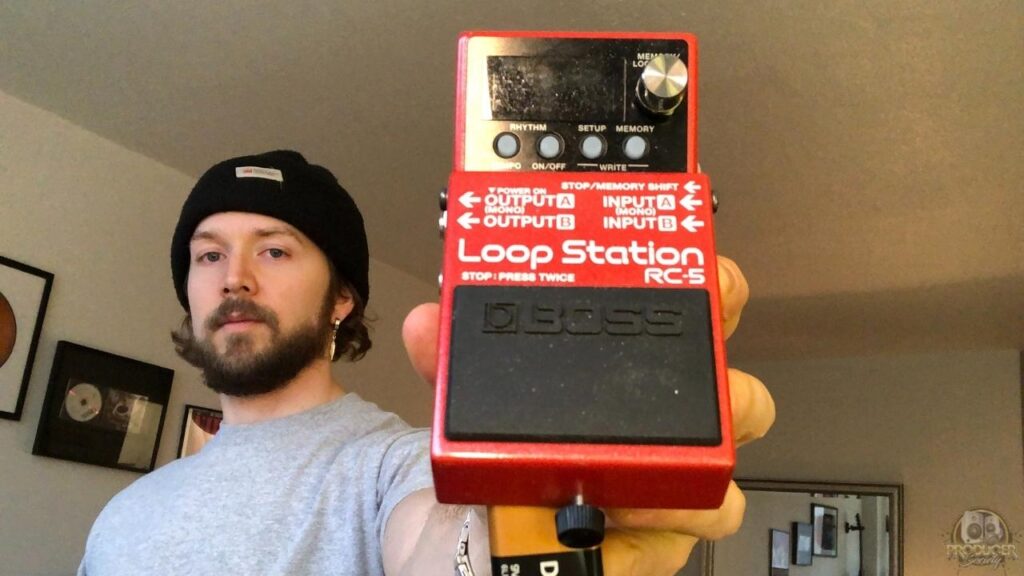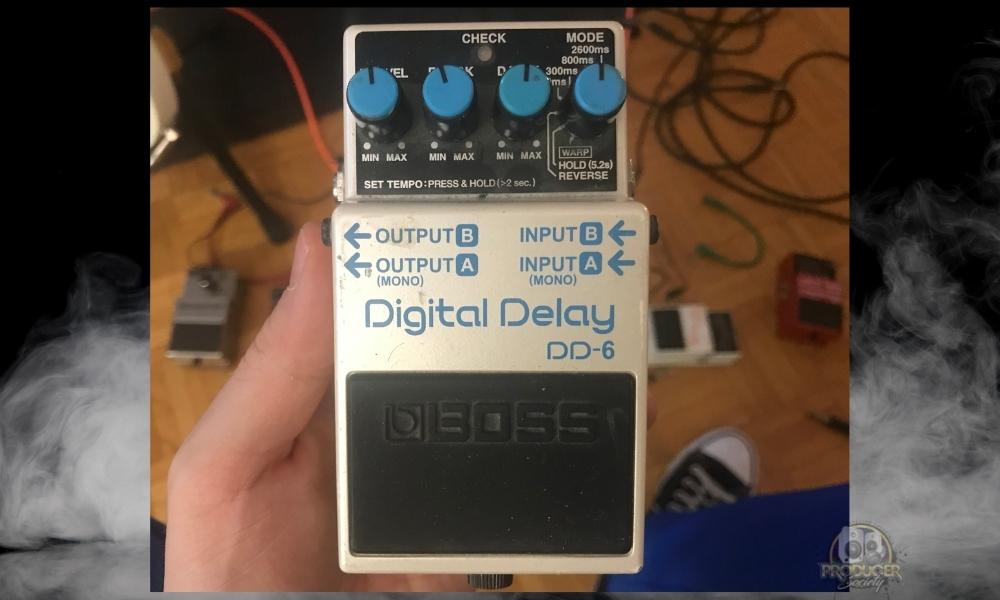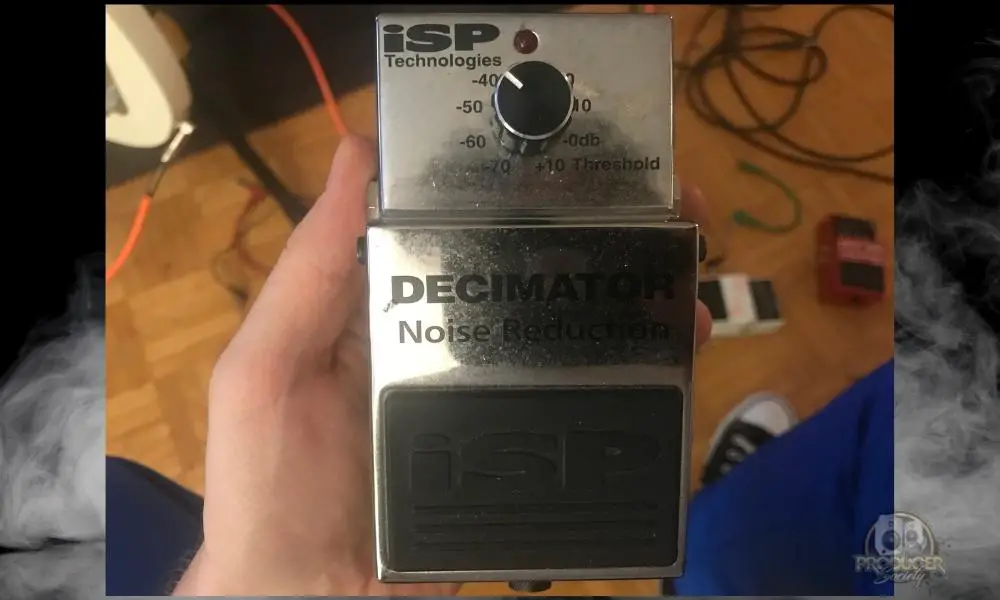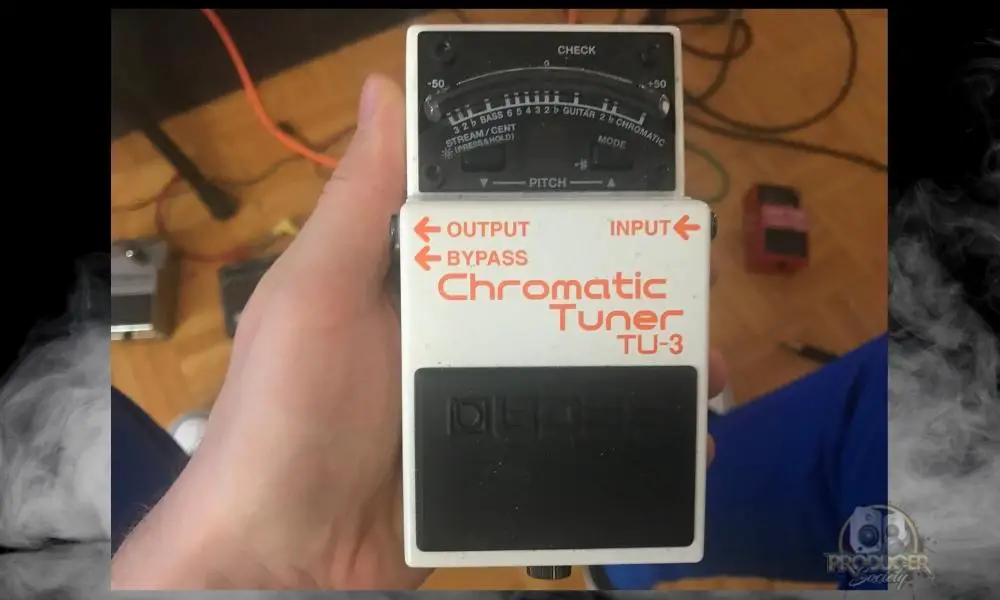I’ve been playing guitar for most of my life including all of my adult life, and it always bugged me how 9V batteries almost never lasted longer than a few hours in guitar pedals. Despite knowing this, I still found myself never buying a much-needed power supply.
That was until recently after I bought an MXR Isobrick, but this isn’t about that. I looked online because I was curious if other people found the same thing about guitar pedal batteries, and lo and behold, I’m not the only one. But how long do batteries really last in guitar pedals?
Typically, a 9V battery will last between 2 & 35 hours in a guitar pedal. However, pedals with a higher current draw like reverb (50mA), delay (65mA), and loopers (170mA), will last between 2 & 10 hours. Conversely, compression, drive, modulation, fuzz, and boost pedals, can last up to 35 hours.
I know these numbers because I actually did an experiment which I’ll show you down below in the YouTube video. With that in mind, this article is going to be a short one today because I believe the YouTube video that I did really did most of the talking. However, I will dive into some of the details that I missed.
How Long Do Batteries Last in Guitar Pedals – The Experiment
What I Did For The Experiment
The Pedals
I currently have four guitar pedals in my possession that can use a 9V battery and then I have two that are 18V or require alternating current instead of direct power (the Digitech Whammy Pedal). They are the following:
- BOSS Digital Delay DD-6 – mA Rating (Power Draw) = 55mA
- BOSS RC-5 Loop Station – mA Rating (Power Draw) = 170mA
- ISP Noise Gate Decimator – mA Rating (Power Draw) = 35mA
- BOSS TU-3 Chromatic Tuner – mA Rating (Power Draw) = 30mA
Each of these pedals uses the standard 9V batteries that nearly all guitar pedals come with the option to use, with the exception of 18V pedals. Luckily, each of these pedals has way different mA ratings, which is an important part of this experiment.
Essentially, every one of these pedals covers typically mA ranges of guitar pedals, including from low to high: the tuner, the noise gate, the digital delay, and finally, the loop station.
The Experiment
I went out and bought a 9V Duracell battery for each pedal. It cost me $27 in total (in Canadian dollars), which was honestly a little expensive. I was surprised.
If you bought 8 rounds of batteries for your pedals, you would have enough money for the MXR Isobrick which I recommend you get as I did.
But I digress. I put each of these batteries in the guitar pedals, and then I let the pedals sit turned on like I normally do when I’m working. I regularly pick up my guitar and start playing whenever I feel like it.
Sometimes it’s just when I’m procrastinating, or other times I actually have an idea in mind where I want to record something for TikTok, or even a song. I did this for approximately four days, which was how long it took for all 4 pedals to totally die out.
The Results – Which Pedals Died First And How Long Did It Take?
This is the order in which the guitar pedals died first:
1) Boss RC-5 Loop Station
Power Draw: 170mA
How Long It Lasts: 1 Hour and 45 Minutes

It shouldn’t be a surprise that the Loop Station – which has the highest current draw – was the one that died first. In case you don’t know, the mA rating stands for milliamperes, and it’s a unit of measurement of electrical current across a certain period of time.
In other words, pedals that have a high mA rating are pedals that use a higher amount of power per unit of time. So a pedal that has an mA rating of 30, draws much less power per hour, for example, than a pedal that draws 170mA.
And what this experiment taught me is that these mA ratings matter quite a bit in terms of how long you can expect the pedals to last. If you take a look at the Loop Station, it’s clearly the most advanced pedal (check out my guide on how to use it here).
For that reason, I would suggest using a power supply for this pedal at all times, and never using a battery. A 9V battery probably wouldn’t last an entire gig if used in the BOSS RC-5 Loop Station.
2) BOSS DD-6 Digital Delay
(The DD-8 is on Amazon)
Power Draw: 55mA
How Long It Lasts: 9 Hours and 30 Minutes

The BOSS DD-6 Digital Delay is the pedal that died out after the Boss RC-5. With an mA rating of 55, this pedal could be used with a 9V battery and it would last probably 3-4 shows.
3) ISP Noise Gate Decimator
Power Draw: 35mA
How Long It Lasts: 19 Hours and 30 Minutes

Despite the fact that I had the Noise Gate running the entire time of the experiment (I mean it was plugged in, and the noise reduction feature was activated), it managed to last a long time.

This is another pedal where you could use a 9V battery for a couple of live gigs if you really needed to.
4) BOSS TU-3 Chromatic Tuner
Power Draw: 30mA
How Long It Lasts: 31 Hours and 30 Minutes

The BOSS TU-3 is the unit that really added man-hours to the experiment. It far exceeded the rest of the pedals, and this makes total sense considering what you use it for, and for how long you use it each time.
Factors That Determine How Long Batteries Last in Guitar Pedals
1) The Current Draw – Measured in mA
According to this website here, the standard 9V battery from Energizer or Duracell is rated for 300 mAh (which stands for 300 mAh per hour). This means that if you have a Boss Loop Station that’s rated for 170mA, it will chew up a battery in less than two hours.
And you would think this is a correct assessment because that’s exactly how long it took for the Loop Station to die. That said, this calculation doesn’t work so much for the other pedals, but I think the reason for this is in the following section.
2) How Much The Pedal Is Used
How much power the pedal draws probably has a lot to do with how often it’s actually in use. For example, the Boss RC-5, whenever it’s plugged in with a cable in the output and input and it’s connected to a power source, will flash very vibrantly.
The LED screen lights up and the memory button is continuously flashing, even when it’s not really that operational. The same thing cannot be said for the TU-3 tuner, which you only use maybe once every 4-6 hours, depending on how much bending you do.
In other words, for the majority of the time that you use the TU-3, it’s mostly just transferring audio signals through it via the signal chain. It’s not like you’re tuning your guitar the entire time you’re connected to it.
The same thing goes for the digital delay. Although, the Noise Gate is different. For the Noise Gate, this is a device that you’ll have plugged in and turned on for the entire time you’re playing.
Most guitarists do this to eliminate the amplifier hiss, especially with high-gain amps. I’m not sure why this is the case, but the calculation doesn’t work when we apply it to the other pedals. It only works for the Looper Pedal. Think about it. Let’s do the math.
9V Battery equals: 310 mAh
Noise Gate has 35mA
Noise Gate also lasted 19.5 hours.
19.5 x 35mA = 682.5 mA.
This means that the Noise Gate should’ve died in approximately 9.5 hours, and not 19.5 hours. That said, I’m not an expert in the physics behind pedals and batteries.
According to this website though, instead, the average mAh of an alkaline 9V battery is 550mAh. 550mAh is almost double 310 mAh, so this number makes a lot more sense, and is closer to the numbers that were concluded in the experiment.
I’m probably not the best person for mathematical calculations as they pertain to electrical current, mA, and voltage.
What I do know for certain though, is that a guitar pedal that has a current draw of 30mA will probably last around 20 hours, and maybe a bit more or less. Even if you’ve got it switched on the entire time.
Other Articles You May Be Interested In
- The Ultimate Troubleshooting Guide to Guitar Pedals [EASY]
- Batteries in Guitar Pedals vs Power Supply – Which Is Better
- What Guitar Pedals Sound Better With Dying Batteries? [EASY]
- Why Do People Use Guitar Pedals? [What You Want to Know]
- How to Fix A Wet Guitar Pedal [Dead SIMPLE]
Important Things To Note About Batteries in Guitar Pedals
1) There May Be Extenuating Factors I’m Unaware Of
Like I said a moment ago, there may be some other factors that I should’ve taken into consideration for the pedal experiment. But I don’t know of them. I did the best I could with the resources and knowledge that I had.


 Written By :
Written By :
